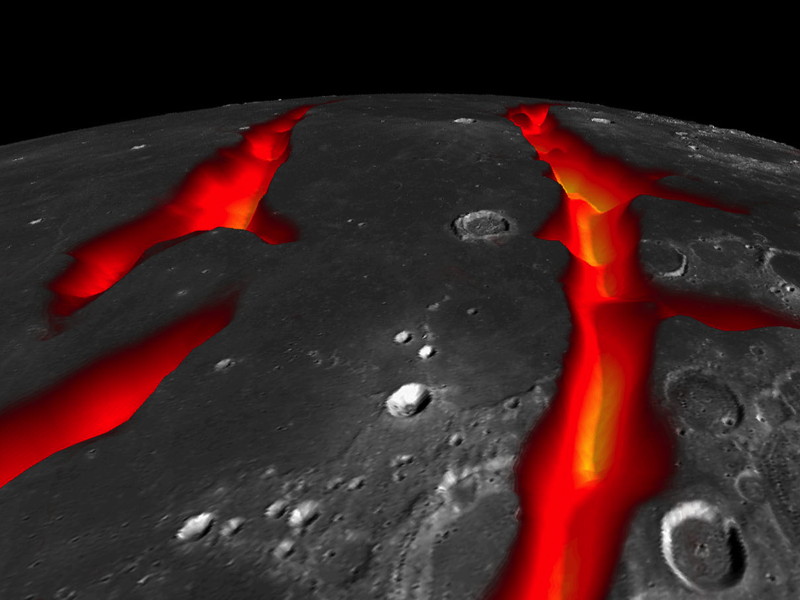The Oceanus Procellarum region on the moon is surrounded by gravitational anomalies (superimposed in red) hidden under the surface. Image via Kopernik Observatory/NASA/Colorado School of Mines/MIT/JPL/Goddard Space Flight Center
The craggy outline of a giant basin on the moon referred to as the ‘man in the moon’ is not the result of an asteroid strike, but a ‘lunar magma plumbing system’ from the moon’s interior, US space agency NASA suggests.
The giant basin, the Oceanus Procellarum, is a dark plain visible to the naked eye on the nearside of the moon. The plain consists of volcanic terrain some 2,600 kilometers (1,600 miles) across, featuring a craggy rectangular outline.
Mission scientists studying data from NASA’s GRAIL (Gravity Recovery and Interior Laboratory) mission believe they have found evidence of the outline being the result of the formation of ancient rift valleys.
The rifts are buried beneath dark volcanic plains and have been detected only in the gravity data provided by GRAIL.
“We interpret the gravity anomalies discovered by GRAIL as part of the lunar magma plumbing system – the conduits that fed lava to the surface during ancient volcanic eruptions,” said Maria Zuber, principal investigator of NASA’s GRAIL mission, from the Massachusetts Institute of Technology, Cambridge.
Had the outline of Oceanus Procellarum been the result of an asteroid impact, the basin would have been circular in shape.
Another theory arising from recent data analysis suggests this region formed as a result of churning deep in the interior of the moon that led to a high concentration of heat-producing radioactive elements in the crust and mantle of this region, NASA said.
The scientists’ findings are published on the website of the journal Nature.

This artist’s concept combines gravity gradients from NASA’s GRAIL mission, and data and an image mosaic from the Lunar Reconnaissance Orbiter’s instruments. Image via NASA/Colorado School of Mines/MIT/JPL/GSFC